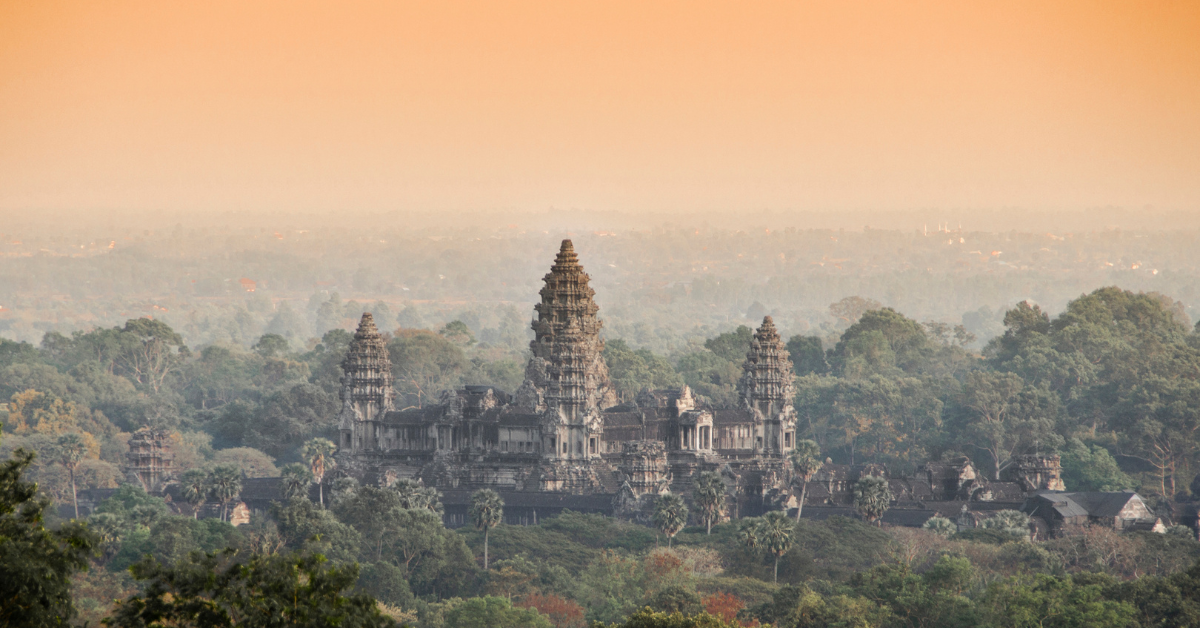Cambodia is written in Kanji as “柬埔寨”, but this form is rarely used in Japan. For Japanese people, Cambodia evokes tourist appeal, tragic history, and the warmth of its people, creating a multi-layered and diverse image.
Kanji Representation of Cambodia
Origin of 柬埔寨
The notation “柬埔寨” is based on the Chinese name for Cambodia. Its pronunciation in Chinese is “jiǎnpǔzhài,” while the Japanese on-yomi reading is “Kenpusai.” It is an approximation of sound using selected characters, not a phrase with inherent meaning.
Another notation 柬蒲塞
In the past, the alternative notation “柬蒲塞 (Kenpusatsu)” was also used. This, too, was a phonetic rendering. Today, however, “柬埔寨” is the widely accepted form.
Usage in Japan
In Japan, official documents and newspapers use the Katakana “カンボジア (Cambodia)”, so the Kanji notation is rarely seen. Still, it occasionally appears in academic writings or in comparative studies with Chinese.
Japanese Impressions of Cambodia
Cambodia as a Tourist Destination
For Japanese people, Cambodia is most strongly associated with Angkor Wat and other major tourist destinations. Visitors are drawn to the grandeur of ancient Khmer civilization, and cities such as Siem Reap and natural sites like Tonle Sap Lake enhance the country’s appeal.
Memories of a Tragic History
The period of the Pol Pot regime, marked by civil war and mass killings, also leaves a deep impression. For many Japanese, Cambodia is seen as “a place to learn the importance of peace.” Sites like the Killing Fields and Tuol Sleng Genocide Museum attract visitors seeking historical awareness.
Warmth of the People
Japanese tourists often comment on the friendliness and warmth of Cambodians. Despite being a developing country, the people’s kindness and genuine smiles leave a lasting impression and encourage repeat visits.
Cambodia Through Sports
Football and Youth Culture
Football is extremely popular in Cambodia, with both children and adults playing in urban areas. When the national team competes in international tournaments, the entire country cheers. The fact that Cambodian players have trained with Japanese J-League clubs adds to the sense of closeness Japanese people feel.
Martial Arts and Traditional Sports
Another defining element is the traditional martial art Pradal Serey, similar to Muay Thai. It is gaining international recognition and is seen as a symbol of Cambodian cultural identity. Tourists also enjoy watching matches as part of cultural experiences.
Sports Exchange with Japan
Sports exchanges further strengthen bilateral relations. Judo, originally from Japan, has been embraced in Cambodia, with Japanese coaches working to train youth. This exchange contributes not only to sports development but also to deepening friendship between the two nations.
Diversity of Japanese Impressions of Cambodia
| Type of Image | Content | Japanese Perception |
|---|---|---|
| Tourism | Angkor Wat, Tonle Sap Lake | A place to visit |
| History | Civil war, Pol Pot regime tragedies | A sad past |
| Culture | Khmer heritage, dance, cuisine | Exotic and unique |
| National Character | Friendly and warm-hearted | Many kind people |
| Sports | Football, martial arts, Judo | Familiarity with Japan |
Key Attractions for Japanese Tourists
| Category | Main Features | Points Appreciated by Japanese |
|---|---|---|
| World Heritage | Angkor temple complex, Bayon Temple | Historical value and grandeur |
| Nature | Tonle Sap Lake, Mekong River | Floating villages, biodiversity |
| Cultural Experience | Apsara dance, cooking classes | Cross-cultural encounters |
| Historical Learning | Killing Fields, genocide museums | Importance of peace education |
Cambodia-Japan Exchange Fields
| Field | Content of Exchange | Significance |
|---|---|---|
| Education | Spread of Japanese language, exchange students | Promoting cultural understanding |
| Economy | ODA support, infrastructure development | Development aid and trust |
| Sports | Judo and football programs | Youth development and friendship |
| Tourism | Two-way travel promotion | Expansion of people-to-people ties |
Conclusion
Cambodia is written in Kanji as “柬埔寨”, a transliteration derived from Chinese. While Katakana “カンボジア” is the standard in Japan, understanding the Kanji representation provides deeper insight into cultural and historical contexts. Japanese impressions of Cambodia are diverse: the wonder of Angkor Wat, the lessons from tragic history, the warmth of its people, and the growing bond through sports. These overlapping aspects create a multi-dimensional image of Cambodia as a nation of both learning and inspiration for Japanese people.






